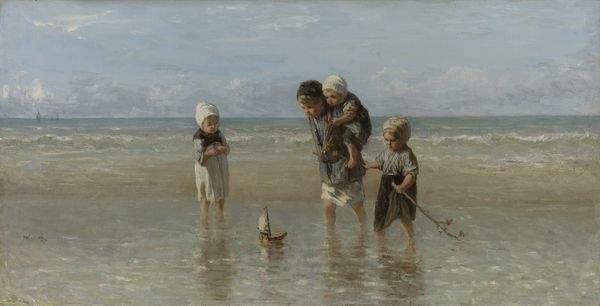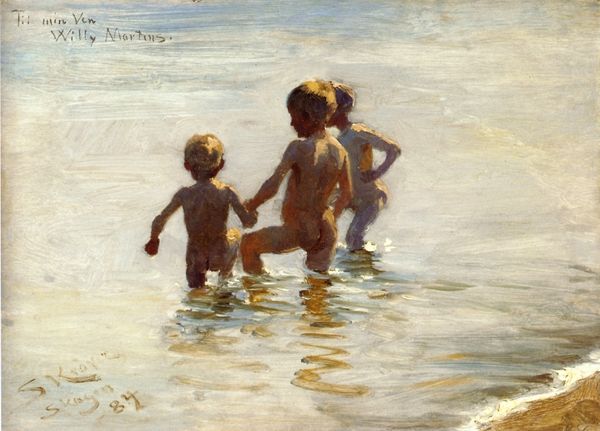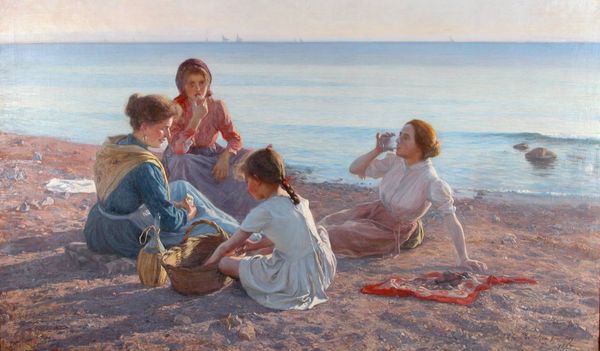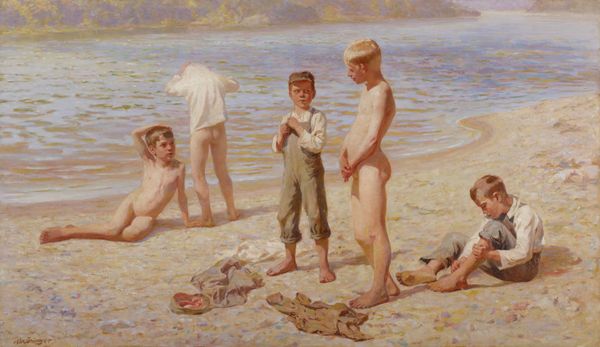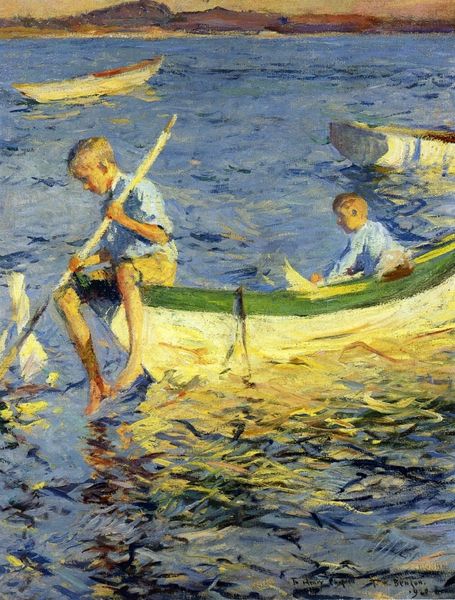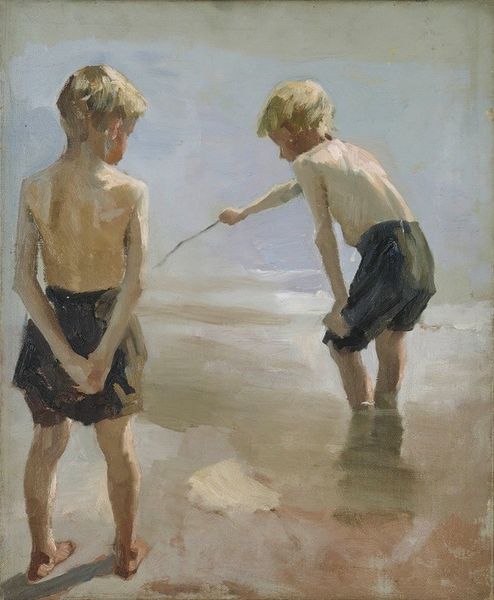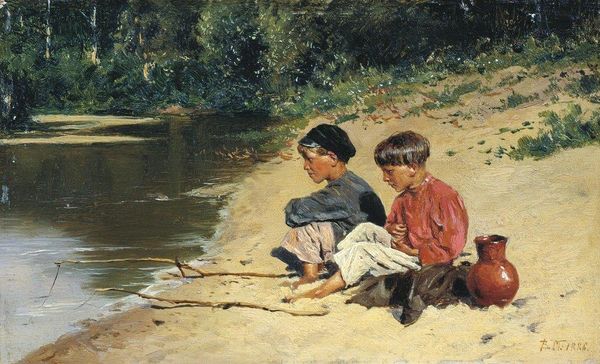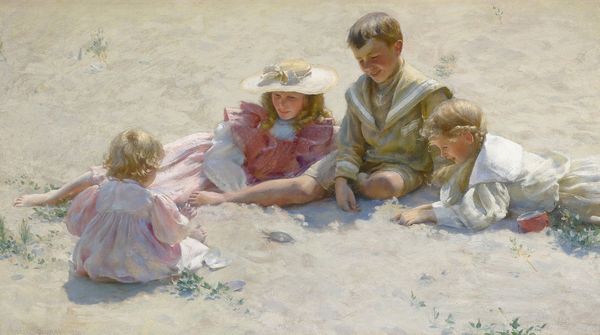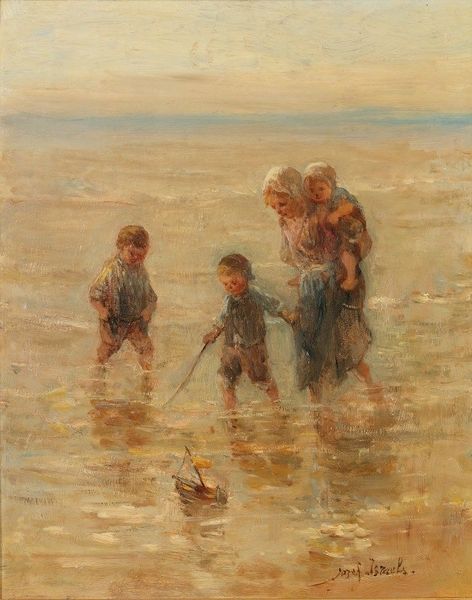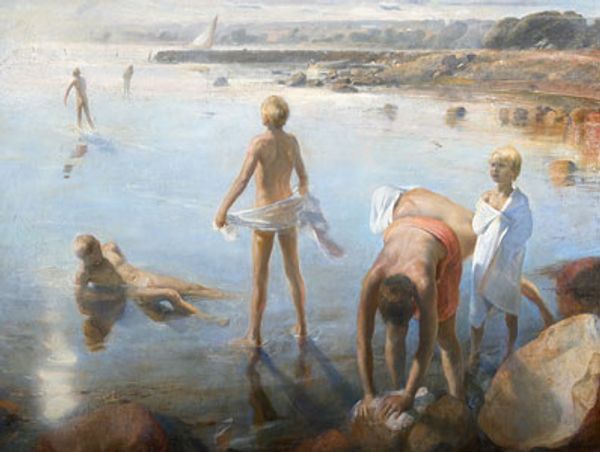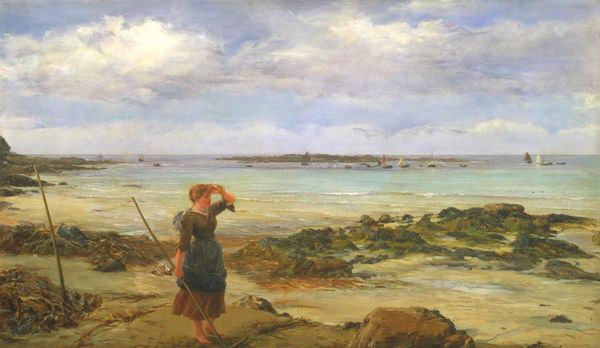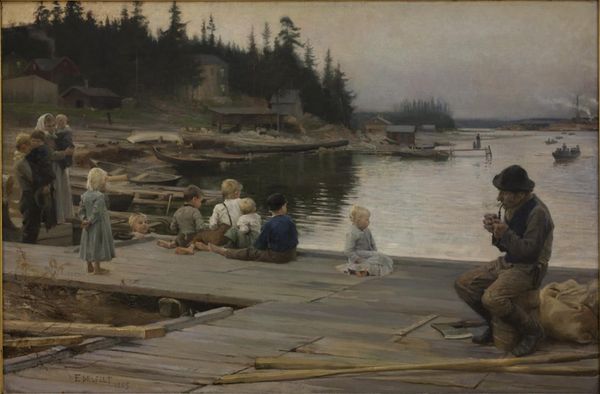
Copyright: Public Domain: Artvee
Editor: So, here we have Albert Edelfelt’s "Boys Playing on the Shore," painted in 1884. It's an oil painting depicting three boys by the water's edge, playing with boats. I’m struck by how simply it captures a carefree summer day. What do you see in this piece beyond its immediate charm? Curator: It's precisely that "carefree summer day" that I find so interesting. Edelfelt painted this during a period of intense nationalism in Finland. How does this idyllic scene, these blond-haired children engaged in play, serve the cultural narrative of Finnish identity at the time? Editor: That's a perspective I hadn't considered. It's not just a charming scene, it’s subtly shaping a national image. Curator: Exactly. Consider the location – a shoreline. Shores are boundaries and points of connection. Are these children representing a harmonious relationship with their natural landscape, solidifying a sense of belonging and ownership of the territory? Are their games also subtle training? Editor: It’s fascinating how the innocent play now has another significance. Is the portrayal of the children significant to the nationalistic sentiment? Curator: Absolutely. In much 19th-century art, children symbolize the future. Depicting them as healthy, robust, and connected to the land is a powerful statement about the nation's future prospects and the purity of its heritage. How are we, as a contemporary audience, implicated in this continued narrative, shaped through art? Editor: It’s given me a lot to think about – how art can function on multiple levels, reflecting and shaping cultural and political landscapes. I'll definitely be approaching similar works with a more critical eye in the future. Curator: Wonderful. Hopefully it will show us that things aren’t always as they seem, and this view shapes all the other work you may see.
Comments
No comments
Be the first to comment and join the conversation on the ultimate creative platform.
